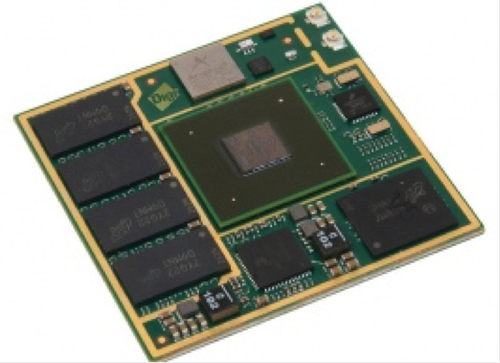The PCB Killer: Chip-Level Modules Are On Their Way
The printed circuit board has been around so long, it just can’t be in danger of being phased out, right? Well, if you have been paying attention to the increasing tendency to put electronic devices on chip-level modules, you might begin to think about the next logical steps.
June 24, 2015
The printed circuit board has been around so long, it just can’t be in danger of being phased out, right? Well, if you have been paying attention to the increasing tendency to put electronic devices on chip-level modules (very small chip-level circuit boards), using direct connections between die, you might begin to think about the next logical steps.
Sure, most manufacturers have been stacking memory or putting memory right next to processors to improve performance and reduce power, but that’s just the first step. Soon, standardized processing modules with processors, memory, peripherals, and interfaces (probably wireless for one and high-speed inter-chip buses for another) will all be located on a single module.
MORE FROM DESIGN NEWS: PCB Design & Layout on a Budget
Everything you need to create a system will be on a single tiny PCB equivalent. The good-old PCB will just be used to interconnect modules, provide power, and connect to a back plane when needed.
For example, take a look at an example module in Figure 1. The compact system from Digi International has a processor, memory, and wireless connectivity (WiFi, Bluetooth, and Bluetooth LE). In many cases, this module provides everything you need for a powerful IoT application.

Figure 1. Multi-chip modules could replace the printed circuit board.
(Source: Digi International)
If you need, perhaps, a specialized sensor or non-standard audio/video interfaces, you can connect to another module using the PCB. Think of the modules as the “cards” in the system and the PCB as the chassis interconnect. You might have several modules that are interconnected on a small PCB.
Modules thus become standard system-level components -- some optimized for computing, some for storage, and some for interfaces. You just select the few modules you need and interconnect them on the PCB.
MORE FROM DESIGN NEWS: Survey: Development Boards Reduce Need for Custom PCB Design
If standard high-speed interfaces are used on each module, the PCB design, layout, and manufacturing become very simple. Once you have your board, you just drop in your code and apply power. Easy as “Pi,” and you save several weeks in your development cycle!
So what is keeping us from this new design utopia? We don't have all of the system-level models needed for the wide range of applications embedded designs serve. Perhaps a single application segment, like the IoT, will become a focus area for module manufacturers that will help grow demand for standard modules, interfaces, and manufacturing techniques, which in turn will help build out the range of modules.
These could serve as the starting point from which we can expand into other applications, in order to get the robust set of modules we need to finally reach the goal.
You can help too. Look for a module that you can use in your next design. Provide the supplier with some feedback on how to improve it. Let the supplier know what standard interfaces you want to see on modules and what other modules you want to connect with.
As an engineer, shape the future with chip-level modules, or it will shape you.
Warren Miller has more than 30 years of experience in electronics and has held a variety of positions in engineering, applications, strategic marketing, and product planning with large electronics companies like Advanced Micro Devices, Actel, and Avnet, as well as with a variety of smaller startups. He has in-depth experience of programmable devices (PLDs, FPGAs, MCUs, and ASICs) in industrial, networking, and consumer applications and holds several device patents.
About the Author(s)
You May Also Like



